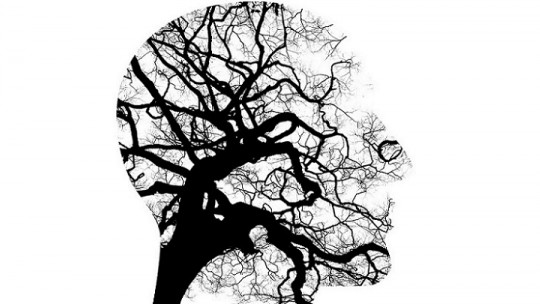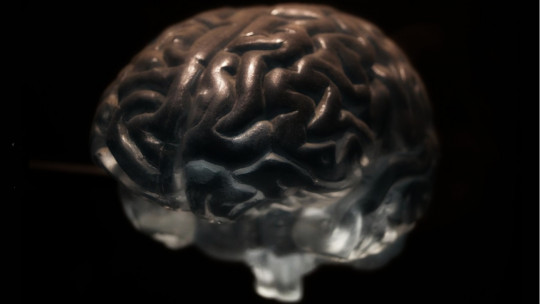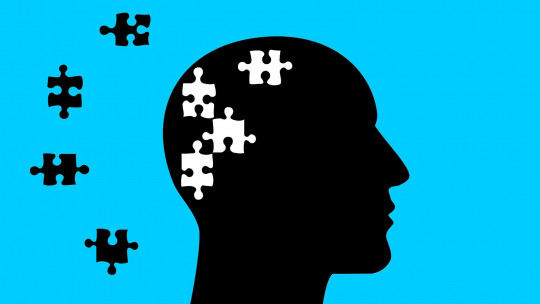
Cognitive-constructivist therapy has been created in order to propose an alternative to the modern theories of the previous century, in order to develop a theoretical model for which the knowledge of each human being is individual, fragmentary and in constant change and development due to the incorporation of new information.
All of this, unlike modern postulates, which advocated an objective and universal theory of human knowledge.
Below we will see some fundamental postulates of all the models that encompass constructivist therapies.
The characteristics of Cognitive-Constructivist Therapies
Cognitive-constructivist theories are based on very diverse theoretical foundations, in addition to having strong philosophical roots, leading to a great plurality of theories to understand human beings.
That is why below We review some ideas shared by the various currents covered by cognitive-constructivist therapy..
1. Perceived reality is influenced by experience
First of all, for all models of constructivism the reality perceived by a person is conditioned by their prior knowledge and, consequently, is somewhat biased. You could say that constructivism is the opposite of purely objective realism.
2. Information processing is regulated by three foundations
In relation to the previous premise, although it is true that each person has their unique way of perceiving and processing the information that surrounds them, creating cognitive structures that provide them with a sense of identity, this is accompanied by three coordinating foundations, which are the following. : first of all, a need to organize your experience and the information you perceive; secondly, a need to permanently maintain perceptions of him; Thirdly, the human being has an urgent need to find meaning in what happens to you.
3. Each person has a unique way of thinking
A postulate of constructivism is the fundamental dissimilarity that people have with respect to other species: the capacity they have to be able to reflect on what happens to them.
4. The human being is a proactive entity processing information
That human beings have the capacity to actively process information is another of the premises of constructivism. An example would be Kelly’s idea about the functioning of the human mind with his term known as the personal scientist.
This term refers to the fact that, just as in the scientific process, theories and models are developed in order to understand certain phenomena, Each person is like a scientist who is continually developing his or her own theories. in order to understand what surrounds you.
5. Special relevance in the way thoughts are constructed
For constructivists, what is relevant when it comes to understanding the way of thinking of human beings is not the content of their thoughts, but rather the development by which said content has been constructed.
Unlike classical psychotherapy models, whose theory focuses mainly on a series of cognitive schemas that all people have in common (e.g., thoughts that arise automatically, irrational ideas or maladaptive schemas).
6. Great importance to human interrelations and language
The construction of meanings of what surrounds us through interaction with other human beings is also relevant.
Thus, our language is a fundamental tool when it comes to forming our knowledgesince the knowledge that we have formed through a conversation fixes our knowledge in the form of a story that provides a coherent meaning to our life.
Historical development of Cognitive-Constructivist Therapy
All these postulates that have just been presented form a compendium that demonstrates the evolution of cognitive-constructivist therapy in the most recent decades, without leaving aside the fact that each author who belongs to this therapeutic trend has his own ideas and theories. That is why the most relevant theories within those belonging to the cognitive-constructivist model will be briefly explained later.
Constructivism comes from the theories of philosophers such as Immanuel Kant. It was later established within psychology through Jean Paiget who introduced it in his theory on learning in childhood; although The first psychologist to use constructivism in his personality model was George Kelly; whose model is known as personal construct theory.
Cognitive-constructivist therapy It was developed as an alternative to the modern theories that were popular at the beginning of the 20th century.. For these theories, knowledge of all the phenomena on the planet could be discovered through objective reasoning.
To the detriment of these theories, At the end of the 20th century is when postmodern currents emerge, such as cognitive-constructivist therapy, which start from the idea that it is impossible for there to be universal and objective knowledge in all areas. For these postmodern currents, the knowledge of human beings is fragmentary, and it will always be changing and developed through theories that will not necessarily be completely objective.
From the point of view of constructivism, it could be said that The human brain is not capable of encompassing the knowledge of such a complex world and the only thing that human beings can do is develop theoretical models. in order to try to understand it. Furthermore, each person creates their own subjective hypotheses in order to understand the world around them based on their personal experience, that is, each person has a different prism when it comes to perceiving and understanding the phenomena in their environment. , as well as when introspecting to understand your inner world.
The pioneer in applying constructivism in psychological therapy is Kelly, as mentioned above, in his theory of personal constructs. Neimeyer then continues to develop Kelly’s theory, Guidano uses constructivism in his post-rationalist cognitive therapy, Gergen uses constructivism in his theory of social constructivism, Gonçalves develops narrative constructivism and it is Michael Mahoney who combines all the previous techniques and theories in a single psychotherapy model.

Types of Cognitive-Constructivist Therapies
Below we will review the main types of therapy belonging to the branch of cognitive-constructivist therapies.
1. Kelly’s therapy
The fundamental goal of this therapy is to find different ways to use existing personal constructs or to build alternative cognitive theories, in order to be able to develop new ways of behaving the patient that can serve to compose constructs that are more useful in their life.
The psychologist who performs this type of therapy must act with an attitude of acceptance and openness towards what the patient brings to consultation., treating it as if it were a conversation from expert to expert in a theory and, starting from that base, helps to promote the change towards the development of personal constructs that allow you to act according to them in a way that feels in harmony. This way of positioning the psychotherapist is known in psychotherapy as “collaborative empiricism.”
Let’s now see what the “personal constructs” associated with this therapy are. These constructs are based on the fact that people are like a kind of informal scientist who builds their own theoretical hypotheses in order to be able to anticipate the events that occur throughout their lives. Therefore, the behavior of human beings forms a kind of experiment in which their personal constructs are tested.
1.1 Individualized
Are different in each personalthough there are some that are common in a group of people belonging to the same culture.
1.2 Dictomics
They are integrated along a continuum divided between two extremes; which means that they go from the pole of similarity (e.g., what is similar about two people or events) to the opposite pole of contrast (e.g., what is different about them).
1.3 Hierarchical
They are organized hierarchically, so that There are some constructs that are fundamental and give meaning to the behaviors of each person..
1.4 Miscellaneous
They have a wide variety and They are activated in response to each situationwithout requiring everyone to be the same in different situations (e.g., someone may be helpful in one context and behave in the opposite way in another).
2. Guidano’s post-rationalist therapy
Guidano’s theory, on which his therapy is based, is based on the foundation that the cognitive development of the human being is determined by the fact that our upbringing takes place in an environment in which we find ourselves surrounded by other human beings, and In this context, emotions play a primary role.. It also suggests that people’s knowledge fundamentally seeks organization and a sense of coherence.
As a result of the above, Human beings actively process the reality that surrounds them, creating knowledge in a self-referential manner.; which means that each person makes the events that occurred throughout their history their own. This is why the identity or self of each person is continually changing due to the constant inclusion of new experiences. And the result of all this previous process, Guidano calls it organizations of personal meanings (OSP).
Therefore, the objective of Guidano’s post-rationalist psychotherapy is to learn to make the organizations of personal meanings more flexible so that the patient learns to understand the events that happen to you and the environment around you in a way that helps you adapt.
This therapy must be carried out in a safe context that facilitates the patient’s free expression of their emotions and thus can train in their management.
The way the patient changes in this therapy is known as “the moviola.” And this technique consists of making it easier for the patient to reconstruct certain events in her life.
- You may be interested: “The Theory of Information Processing and Psychology”
3. Gonçalves’ cognitive-narrative psychotherapy
Gonçalves’ constructivist theory It is based on the idea that people build their personal reality through integration with others, and this is achieved through language.. This type of therapy gives great importance to the way in which each person interprets their individual reality and the effect it has on their existence.
Gonçalves’ narrative therapy has as its main objective help the patient in the construction of a narrative discourse full of contentwhich is also flexible and coherent, making it easier to find yourself more open to the complexity of your own experience.
4. Mahoney’s constructivist therapy
As mentioned previously, Mahoney integrates into his constructivist therapy many premises of the authors’ theories that have just been presented.and it is for this reason that his theory to understand the human being is a good compendium of cognitive-constructivist therapy, highlighting the technical eclecticism that he uses in his therapeutic model, which is nourished by cognitive, behavioral and also experiential models.
This therapeutic model seeks to help the patient in his search for a new way to put order to his life. To achieve this, the psychologist encourages the patient to take on the challenge of trying to change their ways of dealing with things, trying new ways of thinking and behaving. Furthermore, the therapist must actively listen to the patient with respect and compassion, in order to become a source of care, relief and encouragement for him.
This therapy starts with supporting the patient so that he can regain balance and calm through “centering” techniques. The purpose of these techniques is to resolve the problems of the patient’s present stage, followed by changing the patient’s dysfunctional patterns of thinking and behavior, and finally addressing the basic processes.
The nuclear ordering processes (PNO) of people are several:
- Reality: the way of organizing information in a categorical manner and seeking a sense of coherence.
- Identity: seeks to give meaning to what happens around the person.
- Value: which is made up of the personal judgments that the person makes about the events that have occurred.
- Power: the way in which each person perceives themselves as the protagonist of their life and, based on this, orders the circumstances based on what is within their control and what is not, what they are capable of and what they do not. it is impossible, etc.
This therapy is successful when the patient manages to change the focus of attention with respect to their circumstances.so that you learn to regain calm and reorient your daily life, as well as to review your own life history.








